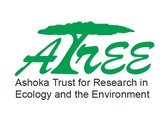Any and all opinions expressed in this newsletter are solely those of the author(s) and do not reflect the opinion of ATREE.
Centre for Excellence in Conservation Science
Royal Enclave,Srirampura,Jakkur Post
Bangalore-560064
Telephone: 080-23635555 (EPABX)
Fax : 080- 23530070
I was surveying the wetland in Pottaisuthi along with some volunteers when one of the volunteers, a young student named Jesuraj, came up to me and asked if the swallow has a
brownish grey patch on its back. I answered in the affirmative and without giving it a thought went on with the survey. I noticed later that he seemed to be noting down observations on a notebook. After surveying three tanks, at the end of the day I
asked him what all he observed in the field. He showed me his notebook and in it were illustrations of all the birds he had seen in the field. Without any formal training and external motivation, using just a pencil, he had sketched the features of the birds
observed by him. The attention that he had paid to details was remarkable. The white patch on the shoulder of black ibis, the spot on the spot-billed ducks etc. was almost like pointers depicting key features of birds in a bird guide. Encounters with
such people even if they are far apart, keep the spirit of many conservationists going. It is for such enthusiastic kids that we as adults wish to hold and pass on the nature's treasures that we inherited. Some of these local kids need a
proper channel to propel their interest in nature. Watching wetland birds can be one such first step towards a long journey of observing nature.
Volunteering for the water-birds survey exposed people to not only observe the birds that use wetlands but also the human-use of wetlands. During the survey, we came across an old lady collecting lotus leaves, a young boy collecting
lotus and lily flowers, some others fishing while farmers were collecting silt from the dry part of the wetland to manure their fields. Wetlands, as we saw, were useful not only to birds but also to humans. Yet, threats stem from powerful lobbies working to
make instant monetary profit which has engulfed many wetlands in the area. Amidst this we are beginning to witness growing stewardship among local farmers and charismatic individuals who have now taken the lead on long drawn legal battles to
conserve wetlands for wildlife and human well-being. It was also heartening to see more volunteers participating in the second year of the bird census. We hope that our activities are aiding to build a support base for such local enthusiasts for
the long and tough journey ahead. Building a constituency around wetland conservation
Editorial Team
Editor: Allwin Jesudasan
Associate editor: Rajkamal Goswami
Editorial Review: R. Ganesan, M. Soubadra Devy, T. Ganesh
Design and presentation: Kiran Salagame
A S H O K A T R U S T F O R R E S E A R C H I N E C O L O G Y A N D T H E E
N V I R O N M E N T
Notes from the editor:
Building a constituency around wetland conservation
- Allwin Jesudasan
If you have any suggestions or comments please let us know through the boxes below






